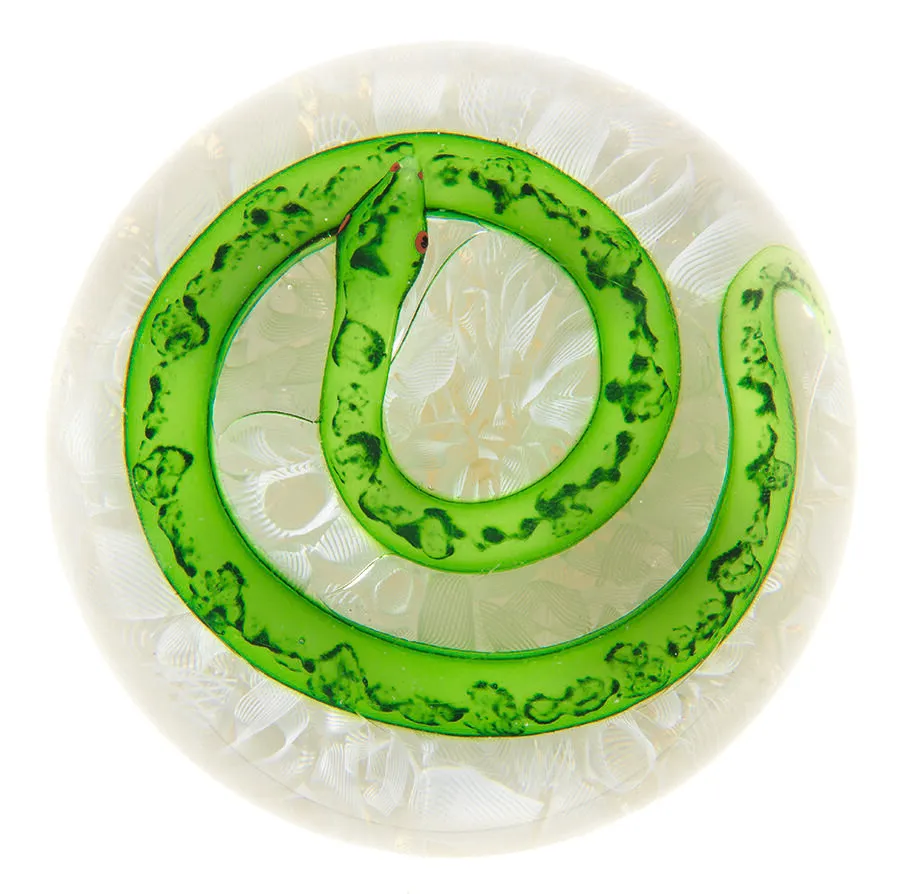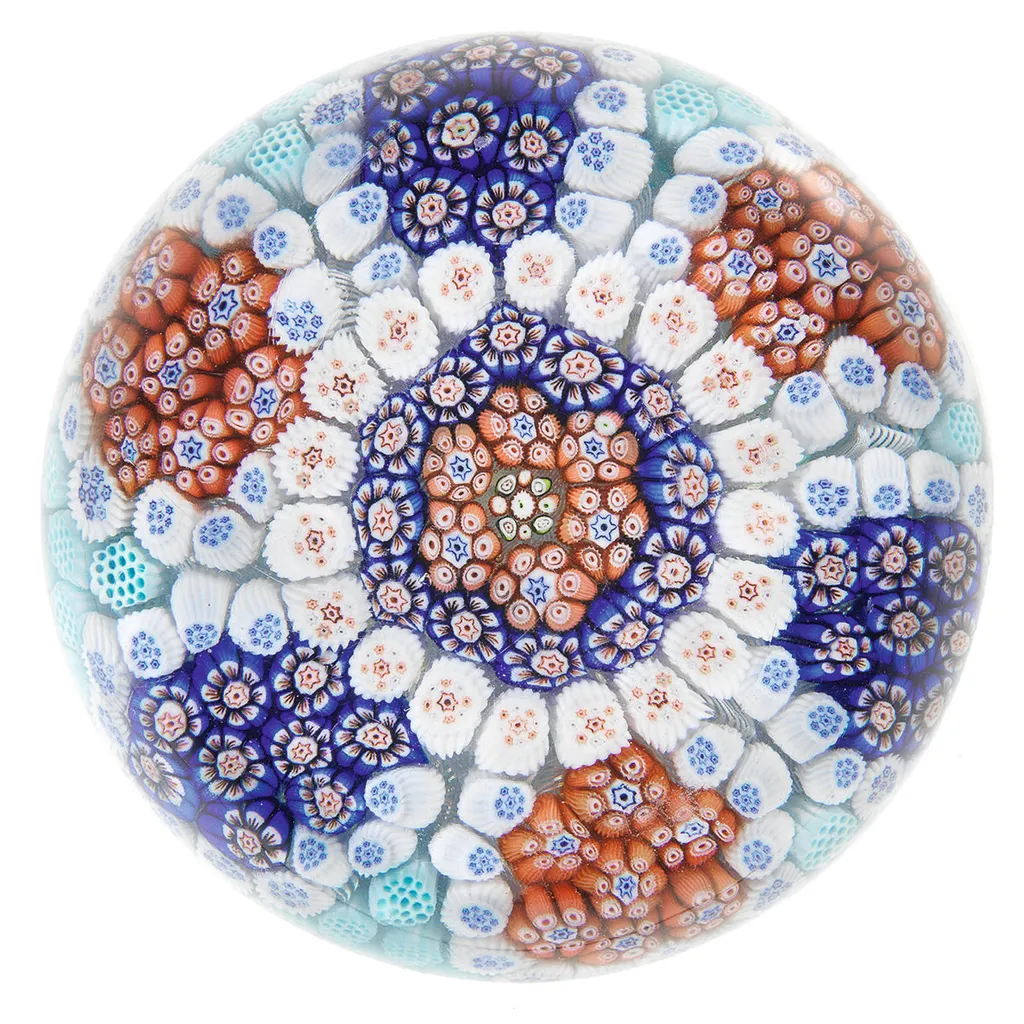The history of paperweights
George Kulles’ 1996 thriller,The Curse of the Imperial Paperweights, weaves a tale about a world-famous collection of paperweights, which disappears from Sotheby’s New York. An investigation into their previous owners ensues. This fictional murder mystery spins on one factual axis: the real individuals within the pages – Empress Eugenie of France, Oscar Wilde, Truman Capote and Eva Peron – all collected paperweights.
These glass orbs were coveted additions for the desks of grand houses and many early collectors were writers. Capote once described them as: ‘rather like frozen snowflakes, dazzling patterns frozen forever’.
Paperweights found popularity after a series of expositions, including the Great Exhibition of 1851 at London’s Crystal Palace. The most sought-after classical paperweights stemmed primarily from three French factories, whose names have excited collectors past and present: Baccarat, Clichy and St Louis.

Which are the most collectable paperweights?
Most antique glass paperweights were created in three styles: millefiori, lampwork and sulphide. The iconic millefiori,or ‘thousand flowers’ techniqueis achieved by layering molten glass, then manipulating it intoa thin rod shape and slicing horizontally to create a pattern in the cross section. These patterned canes can create a multitude of designs and commonly feature botanical themes. An individual cane will sometimes identify the maker, such as the distinctive ‘dancing devil’ of St Louis paperweights, or the small ‘B’for Baccarat. Lampwork refers to the hot flame used to heat a glass cane, while sulphide paperweights are those containing cast animals, people and flowers.
These antique paperweights were originally manufactured over a short period. Production ceased around 1860, which is when collecting began with a vengeance, especially among the wealthy. The glass paperweight enjoyed a renaissance after the Second World War and they are still made by modern glassmakers today, with weights by artists such as Paul J Stankard commanding high prices.
According to Jim Peake, Specialist in Glass at Bonhams, paperweights have proved resilient in the current market. ‘While some fields of glass collecting have experienced fluctuations in value as a result of changes in fashion and collecting habits, paperweights have generally held their value and continue to prove popular.’
Glass paperweights still attract attention among both serious and ‘magpie’ collectors, who might buy one just because they like it. ‘All markets fluctuate, and there has certainly been a general shift away from academic collecting towards collecting focusedmore on aesthetics,’ Jim says. ‘Paperweights lend themselves so well to this because theyare visually appealing and the variety attracts a range of people.’

How much are antique paperweights worth?
If a signature can identify the maker or date, the value is increased. ‘With the exception of miniature paperweights, size matters, and bigger is better,’ says Jim. Most paperweights are between 6.3cm-8.2cm (2.5in- 3.25in), with anything larger classed as a ‘magnum’.
Minor damage won’t always put off a potential buyer. If a crack or chip doesn’t detract from the overall glass or can easilybe polished out, a rare piece will still draw in serious buyers. Evidence of wear, particularly on the base, can actually reassure a buyer that the piece is a genuine antique. However, more serious issues such as an off-kilter design or large air bubbles within the glass will affect value.
Thankfully, once you’ve purchased a paperweight, it’s fairly easy to keep it safe. ‘They are difficult things to break,’ Jim says. ‘The cat will have a hard time knocking a paperweight
off a shelf and, if it does, the worst that can be expected is a nasty chip or bruise, whereas a treasured collection of porcelain will not be so forgiving.’
The sale of a highly anticipated collection can fetch recordprices, showing the continuity of paperweights’ appeal. Jim recalls some of Bonhams’ successes: ‘One of the landmark sales of recent years was that of the celebrated collection belonging to the late Baroness de Bellet in 2010, which made over £602,000 against a pre-sale estimateof £272,000.‘Two significant collectionswere sold by Bonhams more recently in 2018, including that of the Late Countess Poulett and that of Leo Kaplan, both of which contained many exceptional examples, which exceeded expectations.’
Where to buy antique paperweights:
Bonhams
London, New Bond Street & Knightsbridge.
020 7447 7447; bonhams.com
Fileman Antiques
Squirrels, Bayards, Horsham Road, Steyning, West Sussex, BN44 3AA.
01903 813229; filemanantiques.co.uk
LH Selman
Chicago, USA.
Mayfair Gallery
39 South Audley Street, London, WIK 2PP.
020 7491 3435; mayfairgallery.com
The Paperweight People
01935 822316; pwts.co.uk